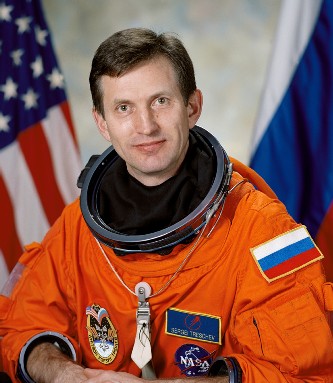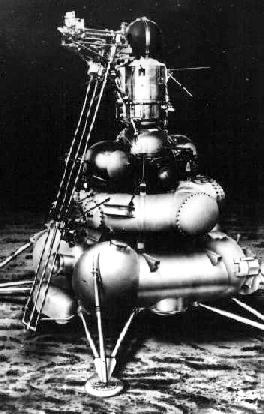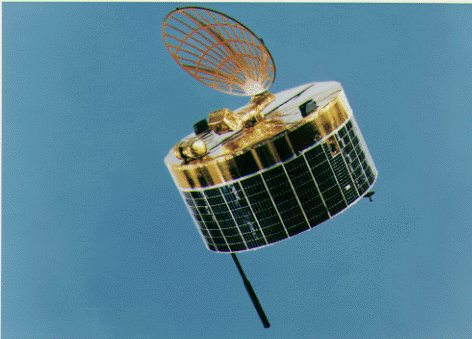
Space History for August 18
If you are not already a subscriber, you are welcome to enter your email address here to sign up to receive the Space History newsletter on a daily basis. Under no circumstances will we release your legitimate email address entered here to outside persons or organizations, and it will only be used for mailing the specific information you have requested.
| Enter your email address here: |
Unsubscribe instructions are included in every newsletter issue in case you decide you no longer wish to receive it.
Note: We record the IP address from which subscriptions are entered to help prevent SPAM abuses.
Race To Space
Someone will win the prize...
... but at what cost?
Visit RaceToSpaceProject.com
to find out more!
1685
Born, Brook Taylor, English mathematician (calculus of finite differences)
ref: en.wikipedia.org
1686
Astronomer Giovanni Domenico Cassini reported seeing a satellite orbiting Venus.
ref: books.google.com
1868
French astronomer Pierre Jules Cesar Janssen discovered helium while analysing the solar chromosphere during a total eclipse of the Sun.
ref: targetstudy.com
1877 09:14:00 GMT
Asaph Hall discovered Mars' largest moon, Phobos, at the US Naval Observatory in Washington, D.C., following his discovery of Deimos on 12 August.
ref: en.wikipedia.org
1884
J. Palisa discovered asteroid #239 Adrastea.
1903
German inventor Karl Jatho reportedly flew with his self-made motored gliding airplane.
On 18 August 1903 Karl Jatho flew with his self-made motored gliding airplane, 4 months before the first flight of the Wright Brothers. His first attempts were made with a plane having three lifting surfaces, but switched to two surfaces soon. They were modelled after the Zanonia seed, a seed that was known for its gliding capability. In contrast to the Wright Brother's plane, the wings were flat in profile and not curved.
He had four witnesses for his flight whose accounts were notarized in 1933 - thirty years after the fact. That delay leads some critics to question his claim of priority.
The plane was equipped with a single-cylinder 10 horsepower (7.5 kW) Buchet engine driving a two-bladed pusher propeller and made hops of up to 200 ft (60 m), flying up to 10 ft (3 m) high. Jatho said he couldn't go higher with the size motor he had.
ref: en.wikipedia.org
1926
A weather map was televised for the first time, sent from NAA Arlington to the National Oceanic and Atmospheric Administration in Washington, DC.
ref: en.wikipedia.org
1933
E. Delporte discovered asteroids #1280 Baillauda, #1848 Delvaux, #1878 Hughes and #2276 Warck.
1939
H. Alikoski discovered asteroid #2257 Kaarina.
1954
Born, Umberto Guidoni PhD (at Rome, Italy), Italian payload specialist astronaut (STS 75, STS 100; nearly 27d 15.25h total time in spaceflight)

Italian astronaut Umberto Guidoni, NASA photo (2001)
Source: Wikipedia
ref: www.esa.int
1958
Born, Sergei Yevgenyevich Treshchov (at Krasnuy Kustar, Lipetsk Oblast, Russian SFSR), Russian engineer (Korolev Design Bureau), Russian cosmonaut (ISS 5; nearly 184d 22.25h in spaceflight)

Cosmonaut Sergei Treschev, ISS EO-5 flight engineer for Rosaviakosmos, NASA photo (28 Nov. 2001)
Source: Wikipedia (spaceflight.nasa.gov killed 25 Feb 2021)
ref: www.spacefacts.de
1960 19:55:00 GMT
The USAF launched Discoverer 14 (KH-1 # 9009) from Vandenberg AFB whose film capsule was retrieved the following day in the first aerial recovery of an object returning from Earth orbit.
ref: nssdc.gsfc.nasa.gov
1962 05:02:00 GMT
USSR launched Cosmos 8 (also called Sputnik 18).
Cosmos 8, launched 18 August 1962, was a Soviet DS (Dnepropetrovsk Sputnik) type military satellite launched from Kapustin Yar. The DS spacecraft were small satellites built by Yangel's OKB-586 / KB Yuzhnoye in the Ukraine for launch by the same KB's Kosmos launch vehicles. They were used for a wide range of military, scientific research, and component proving tests.
ref: nssdc.gsfc.nasa.gov
1964 09:21:00 GMT
USSR launched 3 communications satellites (Cosmos 38-40) into slightly elliptical orbits with mean altitudes between 1430 and 1490 km.
ref: nssdc.gsfc.nasa.gov
1967
NASA's Lunar Orbiter 5 took its last photos, having completed its photographic mission in orbit around the Moon.
Lunar Orbiter 5, the last of the Lunar Orbiter series, launched 1 August 1967, was designed to take additional Apollo and Surveyor landing site photographs, and to take broad survey images of unphotographed parts of the Moon's far side. It was also equipped to collect selenodetic, radiation intensity, and micrometeoroid impact data, and was used to evaluate the Manned Space Flight Network tracking stations and Apollo Orbit Determination Program. The Deep Space Net Tracking Station at Woomera, Australia, acquired the spacecraft about 50 minutes after liftoff. Signals indicated that all systems were performing normally and that temperatures were within acceptable limits. The spacecraft was placed in a cislunar trajectory, and on 5 August 1967 was injected into an elliptical near polar Lunar orbit 194.5 km x 6023 km with an inclination of 85 degrees and a period of 8 hours 30 minutes. On 7 August, the perilune was lowered to 100 km, and on 9 August the orbit was lowered to 99 km x 1499 km with a 3 hour 11 minute period. The photographic portion of the mission ended on 18 August.
The spacecraft took its first photograph of the moon at 6 August 7:22 AM EDT. The spacecraft acquired photographic data from 6-18 August 1967, and readout occurred until 27 August 1967. A total of 633 high resolution and 211 medium resolution frames at resolution down to 2 meters were acquired, bringing the cumulative photographic coverage by the 5 Lunar Orbiters to 99% of the Moon's surface. Accurate data were acquired from all other experiments throughout the mission. The spacecraft was tracked until it impacted the Lunar surface on command at 2.79 degrees S latitude, 83 degrees W longitude (selenographic coordinates) on 31 January 1968.
The main bus of the Lunar Orbiter was approximately a truncated cone, 1.65 meters tall and 1.5 meters in diameter at the base. The spacecraft was comprised of three decks supported by trusses and an arch. The equipment deck at the base of the craft held the battery, transponder, flight progammer, inertial reference unit (IRU), Canopus star tracker, command decoder, multiplex encoder, traveling wave tube amplifier (TWTA), and the photographic system. Four solar panels were mounted to extend out from this deck with a total span across of 3.72 meters. Also extending from the base of the spacecraft were a high gain antenna on a 1.32 meter boom, and a low gain antenna on a 2.08 meter boom. Above the equipment deck, the middle deck held the velocity control engine, propellant, oxidizer and pressurization tanks, Sun sensors, and micrometeoroid detectors. The third deck consisted of a heat shield to protect the spacecraft from firing the velocity control engine. The nozzle of the engine protruded through the center of the shield. Mounted on the perimeter of the top deck were four attitude control thrusters.
375 W of power was provided by the four solar arrays containing 10,856 n/p solar cells, which could directly run the spacecraft and also charge the 12 amp-hr nickel-cadmium battery. The batteries were used during the brief periods of occultation when no solar power was available. Propulsion for major maneuvers was provided by the gimballed velocity control engine, a hypergolic 100-pound-thrust Marquardt rocket motor. Three-axis stabilization and attitude control were provided by four one-lb nitrogen gas jets. Navigational knowledge was provided by five Sun sensors, a Canopus star sensor, and the IRU equipped with internal gyros. Communications were via a 10 W transmitter and the directional 1 meter diameter high gain antenna for transmission of photographs and a 0.5 W transmitter and omnidirectional low gain antenna for other communications. Both antennas operated in the S-band at 2295 MHz. Thermal control was maintained by a multilayer aluminized mylar and dacron thermal blanket which enshrouded the main bus, special paint, insulation, and small heaters.
The Lunar Orbiter program was managed by NASA Langley Research Center and consisted of building and launching 5 Lunar Orbiters which returned photography of 99% of the surface of the Moon (near and far side) with resolution down to 1 meter. Altogether, the Orbiters returned 2180 high resolution and 882 medium resolution frames. The micrometeoroid experiments recorded 22 impacts showing the average micrometeoroid flux near the Moon was about two orders of magnitude greater than in interplanetary space but slightly less than the near Earth environment. The radiation experiments confirmed that the design of Apollo hardware would protect the astronauts from average and greater-than-average short term exposure to solar particle events. The use of Lunar Orbiters for tracking to evaluate the Manned Space Flight Network tracking stations and Apollo Orbit Determination Program was successful, with three Lunar Orbiters (2, 3, and 5) being tracked simultaneously from August to October 1967. The Lunar Orbiters were all eventually commanded to crash on the Moon before their attitude control gas ran out so they would not present navigational or communications hazards to later Apollo flights.
ref: nssdc.gsfc.nasa.gov
1971
T. Smirnova discovered asteroids #2071 Nadezhda and #3501.
1972
L. Zhuravleva discovered asteroids #1858 Lobachevskij, #2098 Zyskin and #3108.
1974 05:02:00 GMT
The USSR Cosmos 672 capsule, an unmanned precursor of the Apollo-Soyuz Test Program (ASTP), landed after completing its six day mission.
ref: nssdc.gsfc.nasa.gov
1976
USSR's Luna 24 landed in Mare Crisium (Sea of Crisis) at 12.75 N, 62.2 E, during the third Soviet Lunar sample return mission.

USSR Luna 24 on the Moon, artwork courtesy of NASA
Source: NSSDCA Master Catalog
The last of the Luna series of spacecraft, Luna 24 was launched 9 August 1976 as the third Soviet mission to retrieve Lunar samples (the first two were returned by Luna 16 and 20). After entering an initial 115 x 115 km Lunar orbit with an inclination of 120 degrees, the probe landed in Mare Crisium (Sea of Crisis) at 12.75 N, 62.2 E on 18 August 1976. Using a sample arm and drill, the mission successfully collected 170.1 grams of Lunar samples and deposited them into a collection capsule. The capsule was launched from the Moon at 5:25 UT on 19 August and landed at 5:55 UT on 22 August in western Siberia, about 200 km southeast of the town of Surgut, where the samples were collected for scientific study.
See also Luna 24 Descent Craft
ref: nssdc.gsfc.nasa.gov
1977
N. Chernykh discovered asteroids #2580, #3053 Dresden, #3408 and #3518.
1985 23:33:00 GMT
Japan launched its second probe for a rendezvous with Halley's Comet, the Suisei mission (Planet-A).

Japan's Suisei probe, illustration courtesy of NASA
Source: NSSDCA Master Catalog
ref: nssdc.gsfc.nasa.gov
1996 13:18:03 GMT
Russia launched Soyuz TM-24 from Baikonur with cosmonauts Kaleri, Korzun and Andre-Deshays (the first French woman in space) aboard for the Mir EO-22 mission.
Russia launched Soyuz TM-24 on 17 August 1996 for Mir Expedition EO-22, carrying Valeriy Korzun and Aleksandr Kaleri of the Russian Space Agency (RKA), abd Claudie Andre-Deshays of the French space agency CNES. This launch was the first of the Soyuz-U booster with a crew aboard following two launch failures of on unmanned flights. Soyuz docked with Mir's front port 19 Augst at 14:50:21 GMT; Mir was in a 375 x 390 km x 51.6 deg orbit.
On 7 February 1997 at 16:28:01 GMT, the EO-22 crew and American astronaut Linenger undocked the Soyuz TM-24 ferry from the front docking port, flew it around to the far side of the complex and redocked at the rear Kvant port at 16:51:27 GMT. This cleared the forward port for the arrival of the EO-23 crew, who brought with them German astronaut Reinhold Ewald on 12 February.
ref: nssdc.gsfc.nasa.gov
ref: www.spacefacts.de
1999
The Cassini space probe flew by Earth as part of its trajectory to Saturn.
ref: nssdc.gsfc.nasa.gov
2001 13:39:00 GMT
During the 5h 28m STS-105-2 EVA, Discovery astronauts Barry and Forrester installed handrails and heater cables on Destiny, needed for the installation of the S0 truss to be launched in early 2002.
STS 105 was launched 10 August 2001, and spent 12 days in orbit, with eight of those days docked to the International Space Station, from 12 August through 20 August. While at the orbital outpost, the STS-105 crew attached the Leonardo Multi-Purpose Logistics Module, transferred supplies and equipment to the station, completed two space walks and deployed a small spacecraft called Simplesat. Discovery delivered the Expedition Three crew, Commander Frank Culbertson, Pilot Vladimir Dezhurov and Flight Engineer Mikhail Tyurin, for their extended stay aboard the space station. It returned to Earth with Expedition Two crewmembers Commander Yury Usachev and Flight Engineers Jim Voss and Susan Helms who had spent 147 days living on the station.
Mission Specialists Daniel Barry and Patrick Forrester spent a total of 11 hours, 45 minutes outside the ISS during two space walks. The first space walk involved installing the Early Ammonia Servicer (EAS) and the first external experiment, the Materials International Space Station Experiment, onto the station's hull. The servicer, carried into space in the payload bay on the Integrated Cargo Carrier (ICC) contains spare ammonia that can be used in the space station's cooling systems if needed. MISSE was a NASA/Langley Research Center-managed cooperative endeavor to fly materials and other types of space exposure experiments on the space station. The objective was to develop early, low-cost, non-intrusive opportunities to conduct critical space exposure tests of space materials and components planned for use on future spacecraft. Johnson Space Center, Marshall Space Flight Center, Glenn Research Center, the Materials Laboratory at the Air Force Research Laboratory and Boeing Phantom Works were participants with Langley in the project. The experiments were in four Passive Experiment Containers (PECs) initially developed and used for an experiment on Mir in 1996 during the Shuttle-Mir Program. PECs are suitcase-like containers for transporting experiments via the space shuttle to and from an orbiting spacecraft. Once on orbit and clamped to the host spacecraft, the PECs are opened and serve as racks to expose experiments to the space environment.
During the second space walk, Barry and Forrester strung two 13.7 meter (45 foot) heater cables and installed handrails down both sides of the Destiny Laboratory.
The Leonardo Multi-Purpose Logistics Module (MPLM), one of three supplied by the Italian Space Agency, made its second trip to the International Space Station in Discovery's payload bay. Aboard Leonardo were six Resupply Stowage Racks, four Resupply Stowage Platforms, and two new scientific experiment racks for the station's US laboratory Destiny. The two new science racks (EXPRESS Racks 4 and 5) added science capability to the station. EXPRESS stands for Expedite the Processing of Experiments to the Space Station. EXPRESS Rack 4 weighed 1,175 pounds (533 kg) and EXPRESS Rack 5 weighed 1,200 pounds (544 kg). The empty weight of each EXPRESS rack is about 785 pounds (356 kg). The Resuppy Stowage Racks and Resupply Stowage Platforms were filled with Cargo Transfer Bags that contained equipment and supplies for the station. The six Resuppply Stowage Racks contained almost 3,200 pounds (1451 kg) of cargo and the four Resupply Stowage Platforms contained about 1,200 pounds (544 kg) of cargo, not including the weight of the Cargo Transfer Bags, the foam packing around the cargo or the straps and fences that hold the bags in place. The total weight of cargo, racks and packing material aboard Leonardo was just over 11,000 pounds (4990 kg), with a total cargo weight of about 6,775 pounds (3073 kg).
Mission Specialist Pat Forrester used the shuttle's robot arm to move the MPLM from the shuttle to the Earth-facing docking port on the station's Unity module. Both crews worked together to haul tons of supplies and equipment from Leonardo to storage places within the station, then filled Leonardo with unneeded station equipment and trash for return to Earth. Forrester then used the robot arm to reberth the module in Discovery's payload bay for the trip home.
Other payloads on STS 105 were part of the Goddard Space Flight Center's Wallops Flight Facility Shuttle Small Payloads Project. The SSPP system utilizes payload carrier systems such as the Hitchhiker, Getaway Specials and Space Experiment Modules to provide a low cost scientific research environment. SSPP payloads on STS-105 include the Hitchhiker payload Simplesat, the Cell Growth in Microgravity GAS Canister (G-708), the Microgravity Smoldering Combustion experimet (MSC), and the Hitchiker Experiment Advancing Technology Space Experiment Module-10 payload.
STS 105 ended 22 August 2001 when Discovery landed on Runway 15, Kennedy Space Center, Florida, following a one-orbit wave-off due to a rain shower that popped up off the end of the landing strip. Mission duration: 11 days, 21 hours, 13 minutes, 52 seconds. Orbit altitude: 122 nautical miles. Orbit inclination: 51.6 degrees.
The flight crew for STS 105 was: Scott J. Horowitz, Commander; Frederick W. "Rick" Sturckow, Pilot; Patrick G. Forrester, Mission Specialist 1; Daniel T. Barry, Mission Specialist 2; Expedition Three crew flew to the ISS (returned on STS 108): Frank L. Culbertson, Jr., ISS Commander; Vladimir N. Dezhurov, Soyuz Commander; Mikhail Tyurin, Flight Engineer; Expedition Two crew returned from the ISS (launched on STS 102): Yury V. Usachev, ISS Commander; James S. Voss, Flight Engineer; Susan J. Helms, Flight Engineer.
ref: en.wikipedia.org
ref: www.nasa.gov
2005 19:02:00 GMT
During the 4h 58m ISS EO-11-1 EVA, astronauts Krikalyov and Phillips retrieved external exposure experiments, and installed a backup Zvezda module television camera. 45 minutes behind schedule, relocation of a Strela cargo crane adapter was cancelled.
ref: en.wikipedia.org
We are going to run out of oil!
Visit SpacePowerNow.org
to help fix the problem.
SpacePowerNow.org - For Human Survival
Please help support our efforts by shopping from our sponsors.
This newsletter and its contents are Copyright © 2006-2025 by The L5 Development Group. All rights reserved. - Publication, in part or in whole, requires previous written permission. - Academic or personal-use citations must refer to http://L5DGbeta.com as their source. Thank you for your cooperation.





